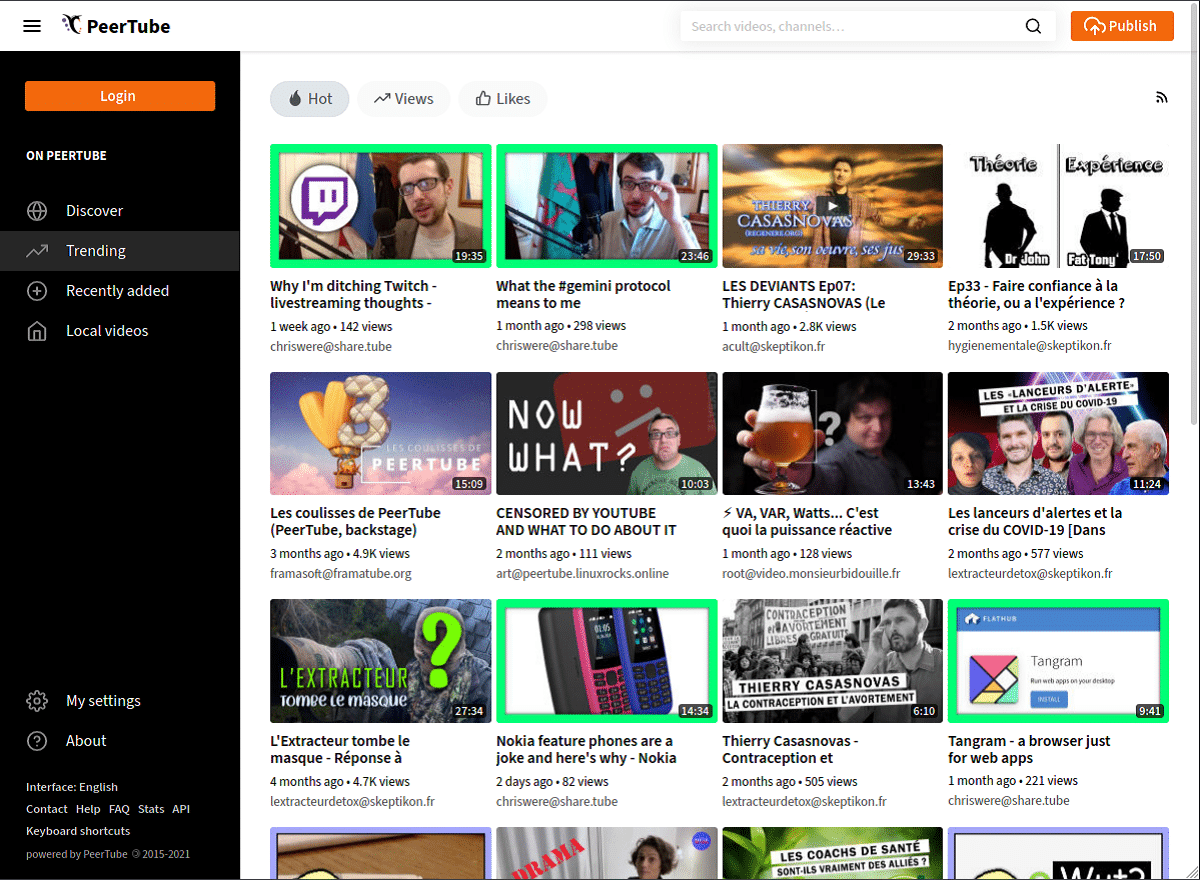
The launch of the new version of the decentralized platform for organizing video hosting and video streaming Peer Tube 3.1 and in this new version several improvements are presented, from content transcoding, as well as some changes in the user interface and administration, among other things.
For those unfamiliar with PeerTube, know that PeerTube offers a vendor-independent alternative to YouTube, Dailymotion and Vimeo, using a content distribution network based on P2P communications and linking visitors' browsers.
PeerTube is based on the use of a BitTorrent client, WebTorrent, which runs in a browser and uses technology WebRTC to organize a P2P communication channel cross-browser direct, and the ActivityPub protocol, which allows disparate video servers to be combined into a common federated network, in which visitors participate in content delivery and have the ability to subscribe to channels and receive notifications about new videos.
Main new features of PeerTube 3.1
In this new version, the possibilities of transcoding audio and video from one format to another have been expanded to ensure content availability on all devices (transcoding takes place in the background, so the new video is available to all devices not immediately, but after a time required to complete the transcoding).
Another important change that is presented in the new version is the support for profile transcoding, which can be used to change the transcoding rules on a specific PeerTube. The profiles are designed as plugins and generally provide different FFmpeg settings. The site administrator can now select a transcoding profile to suit the current task. For example, you can create transcoding profiles to optimize bandwidth or deliver the highest quality audio.
Transcoding task management processes have been modernized, as previously the content was queued and recoded in the order added by the user.
In the new version, the administrator has tools to establish the priority of execution of the work and added the ability to automatically lower the priority based on the number of videos uploaded (individual downloads will be recoded first, which will switch users who downloaded a large number of videos at once). The administrator can monitor the transcoding progress and adjust the number of tasks launched simultaneously.
In the web interface, the "most like" category has been removed from the sidebar, replaced by the "trends" section, which offers three options to select the most popular videos: hot (recent videos with which users interacted the most), views (videos most viewed during the last 24 hours) and likes (videos with the most likes).
In the site administrator interface some elements have been modified, for example, the tab with the list of users has been changed and the button to create a user has been moved to the left side. Added the ability to configure the total and daily quota for the amount of downloaded data.
Of the other changes that stand out from this new version:
- Simplified subscription to accounts located in another node, if you have your own account in that node - to subscribe now, simply click on the "subscribe" button below the video and enter your identifier.
- The configuration of simultaneously executing import tasks (with download by URL or via torrent) has been added to the node administrator interface
- The torrenting system for uploaded videos was implemented, which works in asynchronous mode.
- Removed support for PostgreSQL version 9.6, support for Node.js 10 was deprecated, and support for new Node.js 14 and 15 branches was added.
Finally, if you are interested in knowing more about this new released version, you can consult the details in the following link.